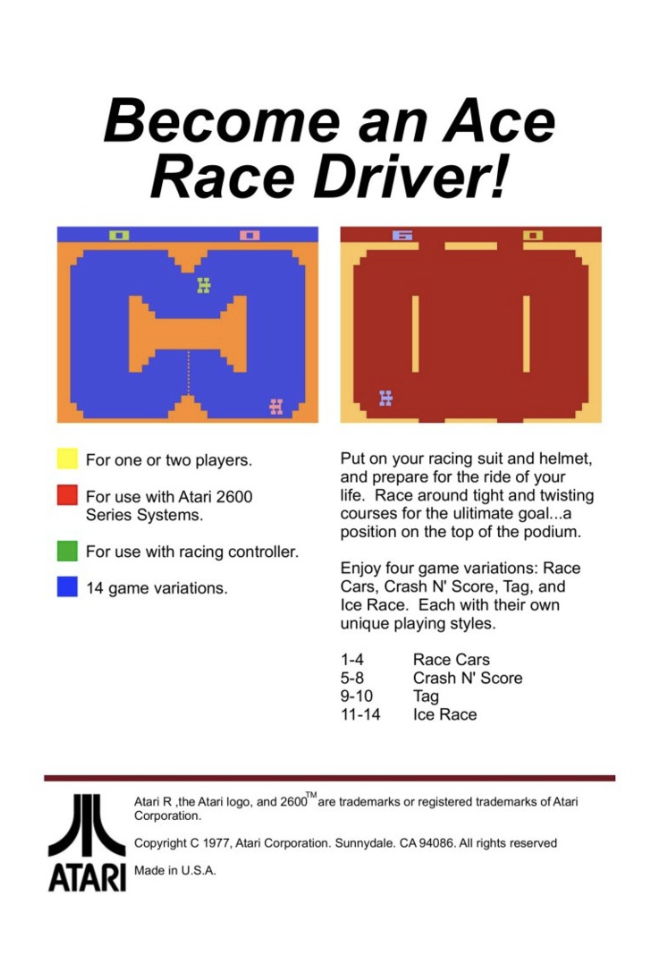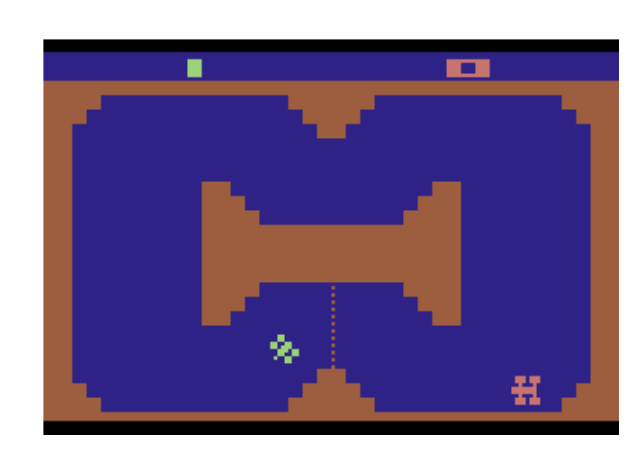We’re not just blasting out our own personal bias here when we say that racing is a big part of gaming. And if you need proof, look no farther than the list of launch titles for your favorite system’s debut. F-Zero (1990) launched alongside the SNES in Japan and North America introducing the world to the console’s mode 7 pseudo-3D effect that believably turned the track in relation to the vehicle. Ridge Racer and Need For Speed titles helped usher in the PlayStation Portable in 2004. Fast RMX get the Nintendo Switch’s engines revving on launch day in 2017. And if that’s not enough proof, buckle up because we’re headed back to the very early days of console gaming to prove if this concept has held true since the ‘70s.
Indy 500, a home console variation of Atari’s Indy 800 arcade machine, brought a rough approximation of racing to the living room (and that giganto tube TV that was mostly made of wood) on Atari’s original home console, 1977’s Atari VCS (also known as the Atari 2600). This Atari VCS launch title was written by Carla Meninsky who would go on to write Dodge ‘Em as well as porting Atari arcade games Warlords and Star Raiders to the VCS.
Like its arcade predecessor, Indy 500 required a lot of imagination (and a fair amount of squinting) in the graphics department. Though it did improve on Indy 800 in one notable way: color. When you take it all the way back to 1977, you find that concepts like color are a fairly big deal. Tracks came in two colors at a time ranging from a royal blue and burnt orange to pea soup green and watermelon red.

Of all the games we’ve talked about on Racing Game History, there’s no doubt that Indy 500 may be one of the most simplistic. And yet, for a game that predates the Nintendo Family computer by about six years, and the launch of the Nintendo Entertainment System in the West by about eight, there’s a lot packed into this launch title. Game modes, for instance.
For those of you who don’t remember consoles with faux-wooden trim, you may not be aware that Atari VCS cartridges packed in multiple game modes. By pulling a level on the system itself, players could switch between the various modes. You may have suddenly found yourself playing the “crash ‘n’ score” mode in which players would maneuver their vehicles toward a white square to score points. A “tag” mode would grant points to the player who wasn’t it as long as they remained safely untagged. First to 99 points wins. The slickest of all the game modes was “ice race,” which made the cars much harder to steer due to icy track conditions.


Looking to experience the magic of Indy 500 for yourself? The game is included in the Atari 50: The Anniversary Collection as “Race 500” on all modern consoles and PC. To unlock Race 500 you need only fully explore the five timelines worth of Atari history contained in the collection.
